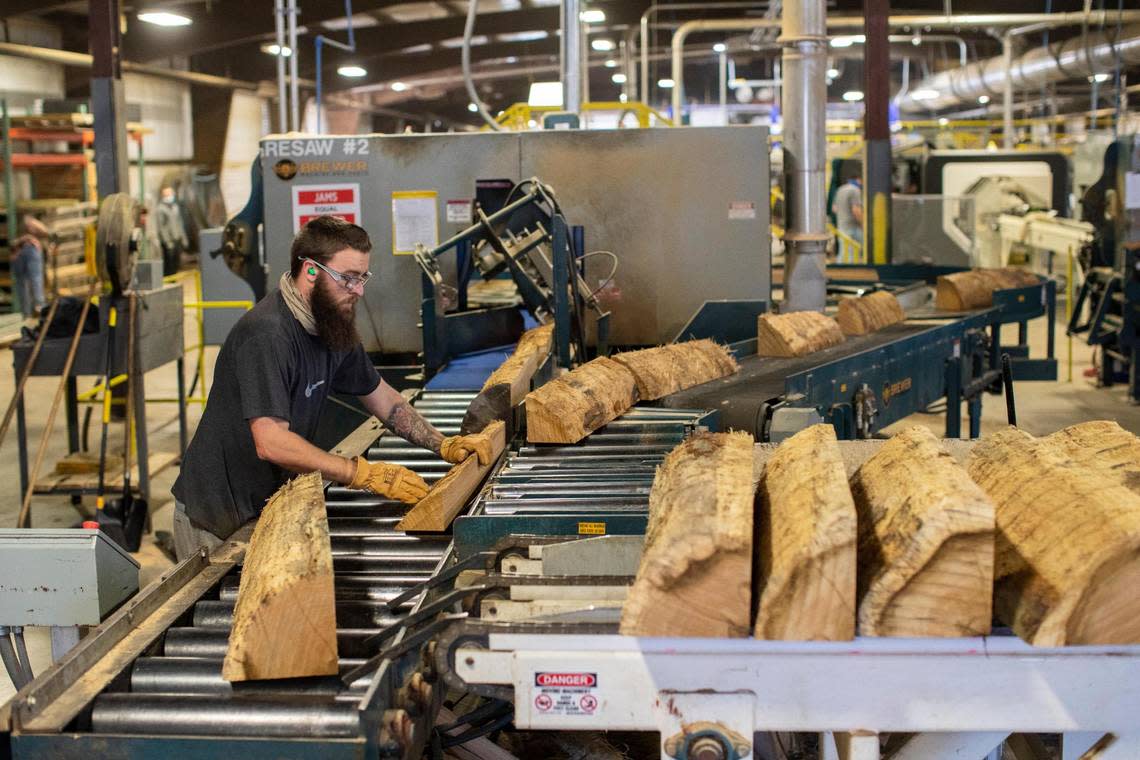The Ky bourbon boom may be causing a shortage of white oak trees needed for barrels | Opinion

Thank you for your recent article about volunteers with Green Forests Work reforesting old strip mine sites in Kentucky. Reforestation is important if we are ever to reduce flooding in the hollers of Eastern Kentucky.
I’m happy to see volunteers from the bourbon industry doing their part, planting white oak seedlings that can one day be used in making whiskey barrels. More important than planting seedlings is to reduce the harvest rates of the mature trees in our mixed-mesophytic forests that absorb as much as 75 percent of the rainfall. Trees release water slowly into the atmosphere through evapotranspiration. And the leaves and mosses on a mature forest floor soak up rainfall like a sponge. Mature trees also help store carbon, provide wildlife habitat and cool shade for recreation. They are the lungs of our planet: we need mature forests to survive.
I am very concerned about the apparently unsustainable harvest rates of our Kentucky forests.
Recently I toured the Independent Stave Company’s (ISC) facility in Lebanon, Kentucky, which uses white oaks for their bourbon barrels. The tour was interesting and fun, and a must stop for those on the Bourbon Trail. ISC is a fast-growing, family-owned company that has recently opened a new plant north of Morehead.
About 450 people work at the Lebanon plant on two shifts. The smell of the toasted wood was delicious. As a Cooper, I was fascinated to see real coopers — true craftspeople — banging metal hoops around the precision-cut wooden staves with big hammers. Their biceps are impressive.
There are about 12 million barrels of bourbon currently aging in Kentucky, and most bourbon is aged for 4 to 6 years. So every year the barrel industry must build about 2-3 million barrels just for Kentucky bourbon. (Wooden barrels are also used to age Tabasco, Tennessee Whiskey and other spirits). One white oak tree provides about enough wood to make two barrels, and the wood cannot have any splits or knots, or the barrel will leak.
The white oaks being cut for whiskey barrels are around 80 to 100 years old, according to our tour guide. So the white oak trees being planted today on strip mines won’t be harvested for almost a century! White oak is a very slow growing species, and we are cutting at least 1 million of these trees every year just for Kentucky bourbon barrels.
Red oaks are used the framing the rickhouses that store the barrels.
Thanks to the world’s growing thirst for Kentucky bourbon, the bourbon industry may soon be facing a shortage of white oaks to make barrels. By law, bourbon must be aged in new, charred white oak barrels. The barrels can only be used for bourbon once, then they are shipped to other companies to add their flavor to Scotch Whiskey, cognac, beer or wine, and some used barrels end up as decoration or planters.
The Oak Solutions Group of ISC offers toasted oak chips that could one day be used to generate the vanilla and caramel flavors that make our Bourbon special. Perhaps whiskey with toasted oak chips could be aged in reusable containers, such as stainless steel tanks. Then some smart distilleries could market a “forest-friendly” spirit that would appeal to the discriminating, well-informed consumers of Kentucky bourbon.
Of course traditions are slow to change in our beloved commonwealth, and Kentucky bourbon is one of our most cherished traditions. But shortages of mature white oak trees will one day drive up the cost of bourbon, and consumers may start looking elsewhere.
Dave Cooper of Lexington is an environmental activist

